Choosing the 1920’s dress for your figure
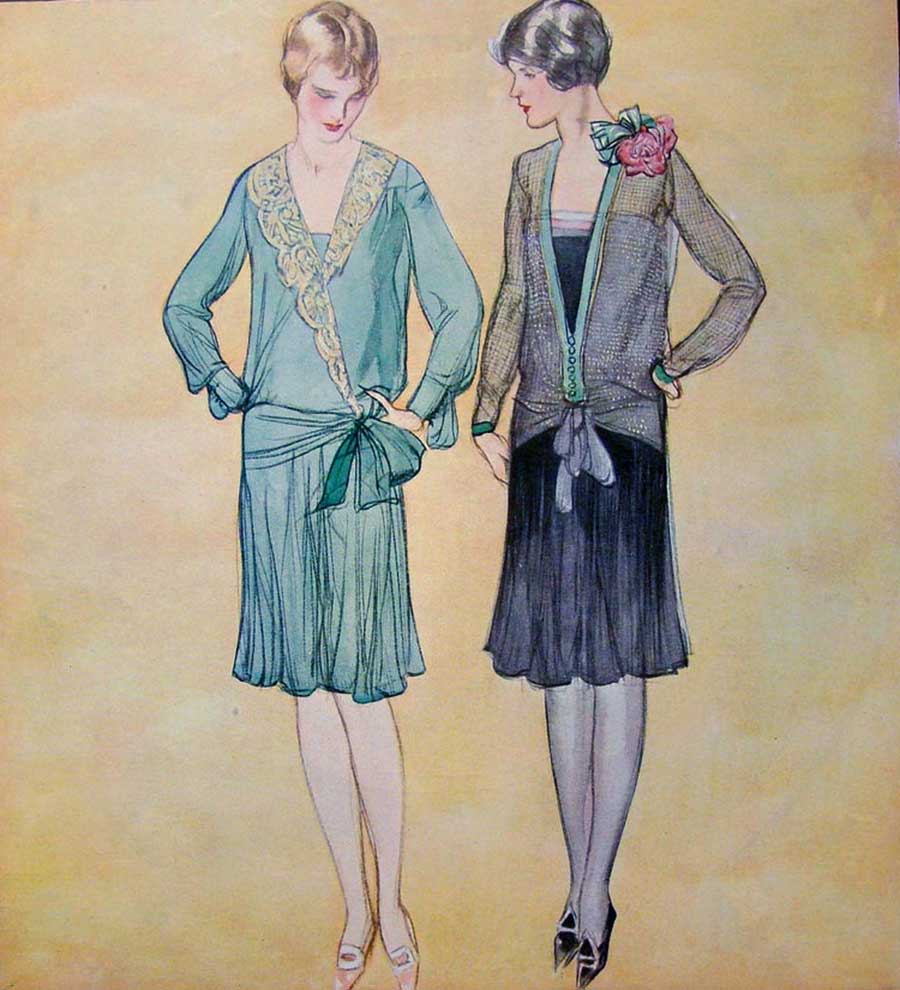
When planning a 1920’s fashion wardrobe or selecting a 1920’s dress , the body should be thought of as a unit.
1920’s dress garments, should be chosen, not as an isolated hat, blouse or skirt, but as part of a whole scheme.
The main parts of the 1920s silhouette are:
1. The mass of the head, including the hair, whether arranged high, low, wide at the sides, or a close crop.
2. The contour of the hat if a hat is worn
3. The contour and length of the sleeves, whether long, short, or three quarter, puffed at shoulder or at wrist, cuffed or plain.
4. The waistline, whether raised or lowered, tight or loose, pointed or straight.
5. the hip line, whether kept smooth and flat or emphasized by drapery, peplum, or pockets.
6. The bottom of the skirt, whether flared, straight, or drawn in at the feet, long or short, even or uneven.
Factors affecting the silhouette
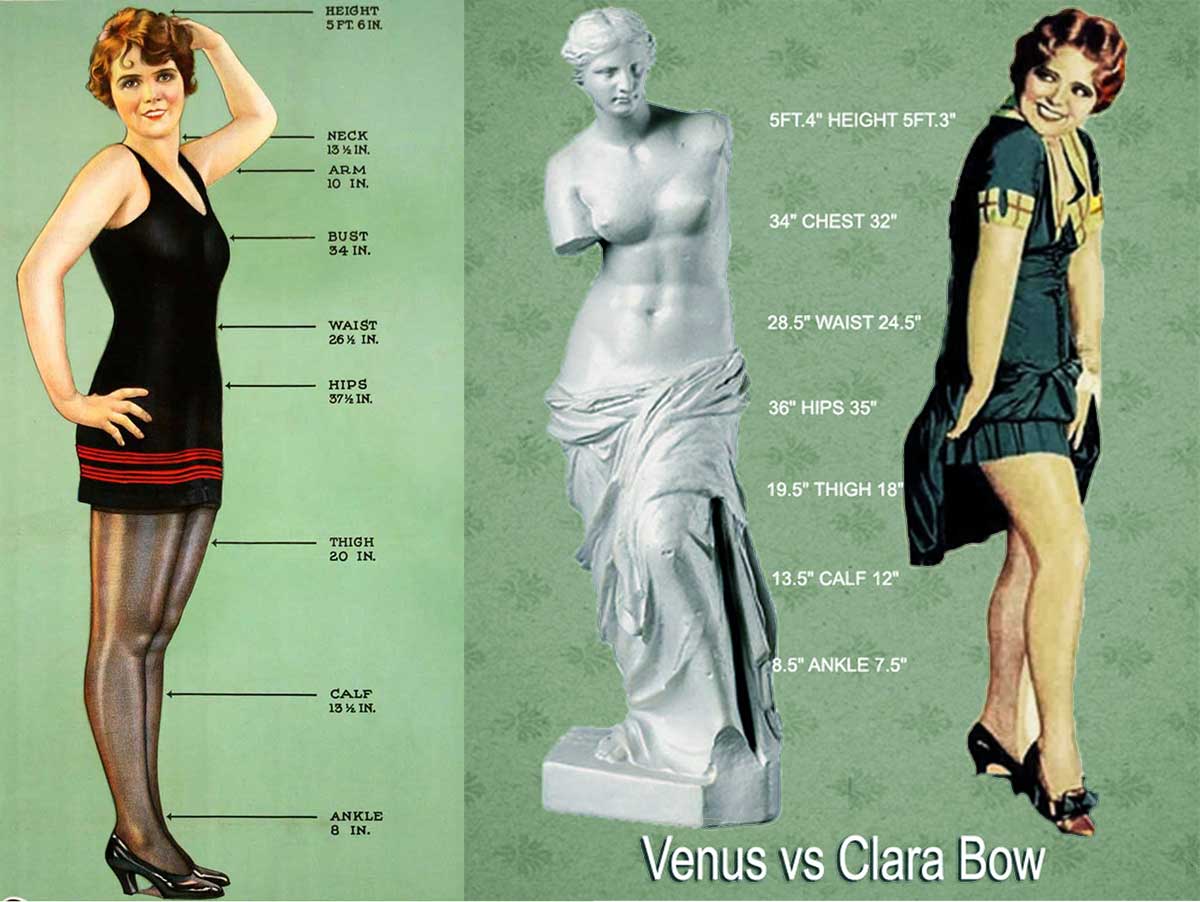
Two things affect a woman’s silhouette, namely, the fashion of the garment and the proportions of the figure.
The fashion of the moment enters into every consideration of costume design. Sometimes it is an ally, sanctioning dress that is becoming; sometimes it advocates a type that is disfiguring. The object of studying constantly changing and recurrent fashions is to learn to analyze them and to compare them to fashions that are becoming. If becoming, then use as they are, if not, then modify or avoid altogether.
The Adult and Adolescent Silhouette
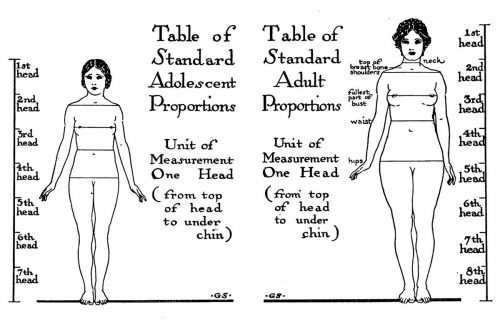
Most designers base their concoctions on the standard proportions of the adult female figure, which is taken as the standard by sculptors and painters, though since the turn of the 1920s, an increasing trend is to design for the younger gamine silhouette. The two diagrams above show the distinct differences in silhouette. The assumption then that all adults must retain the younger silhouette is of course absurd, but understandable as an ideal aesthetic. You can learn to choose your clothing and ‘create’ an ideal silhouette, depending on how far your body shape departs from either the standard adolescent or adult female figure.
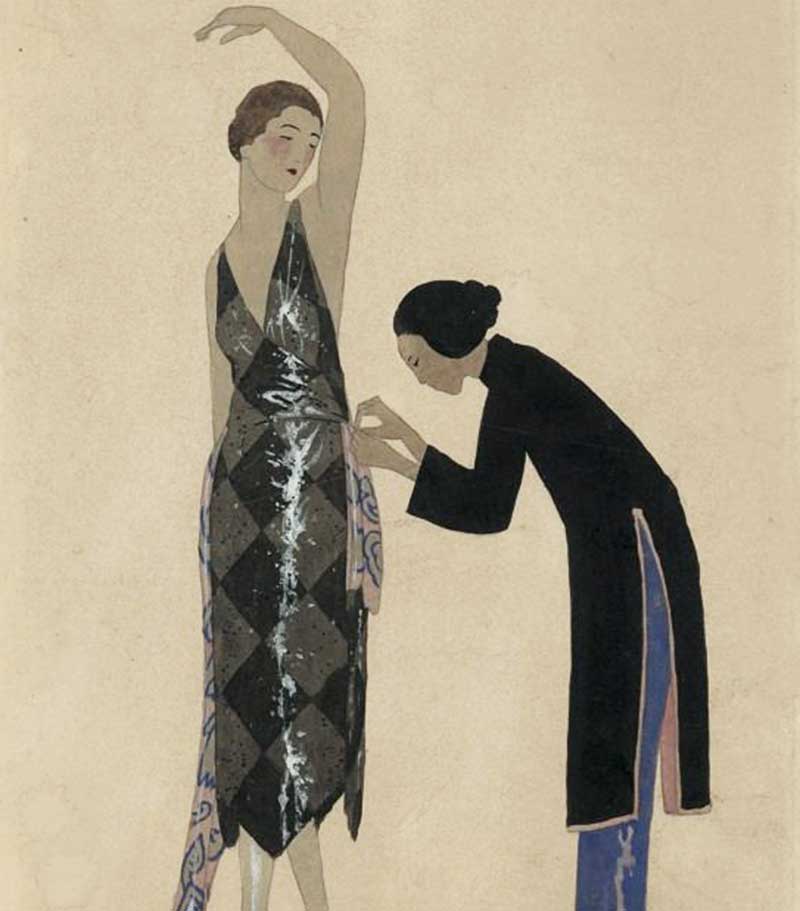
Note that both length and width measurements are smaller in the adolescent than in the mature figure. Note also that the greatest change in proportions takes place at the hips, the bust, and the shoulders. As the figure matures the hips become greater in width than the shoulders. Apart form this obvious change, there are four major variations that will occur, and four minor variations.
The Major Figure Variations
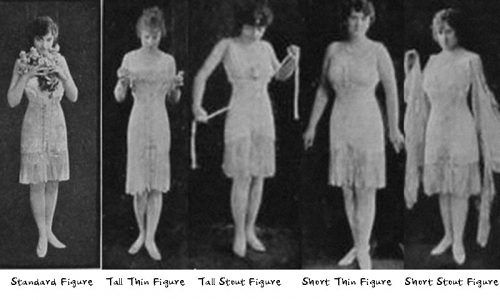
The four commonest variations are the tall thin type; the short thin type; the tall stout type; and the short stout type.
The tall thin type of figure is more than the standard number of heads tall, all the horizontal measurements are less, and the vertical measurements will be more. Frequently the head looks too small for the body. This figure type is easy to camouflage.
The short thin figure is less than standard height, both horizontal and vertical measurements are less than standard, consequently her head may seem large,
The tall stout figure is more than average height. The horizontal measurements are wider than the standard, and the vertical are greater. Her head seems noticeably small for the body.
The short stout type is shorter than the standard figure. The horizontal measurements are are noticeably wider than standard and the vertical are shorter. Its greater thickness and bulk render this this type more conspicuously different from average than other types. It is the hardest variation from standard to camouflage.
The Minor Figure Variations

Beside these general variations from standard figure types, there are minor variations: as short waist, long waist, sloping shoulders, square shoulders, large hips, large bust, flat bust, large abdomen. These variations should be considered in wardrobe planning. Often they are used in conjunction with some general variation, as when a tall, thin woman has a flat bust and sloping shoulders. Often corsetry is used to correct minor variation issues.
Designs for the Standard Figure

If you are that rare species of woman with a standard figure, then you do not have to wear clothing as a means to conceal defects, or to call attention to your good points. You may wear any type of construction that fashion dictates. Of course you still must have good taste in color as well as design.
Designs for the tall, thin Figure
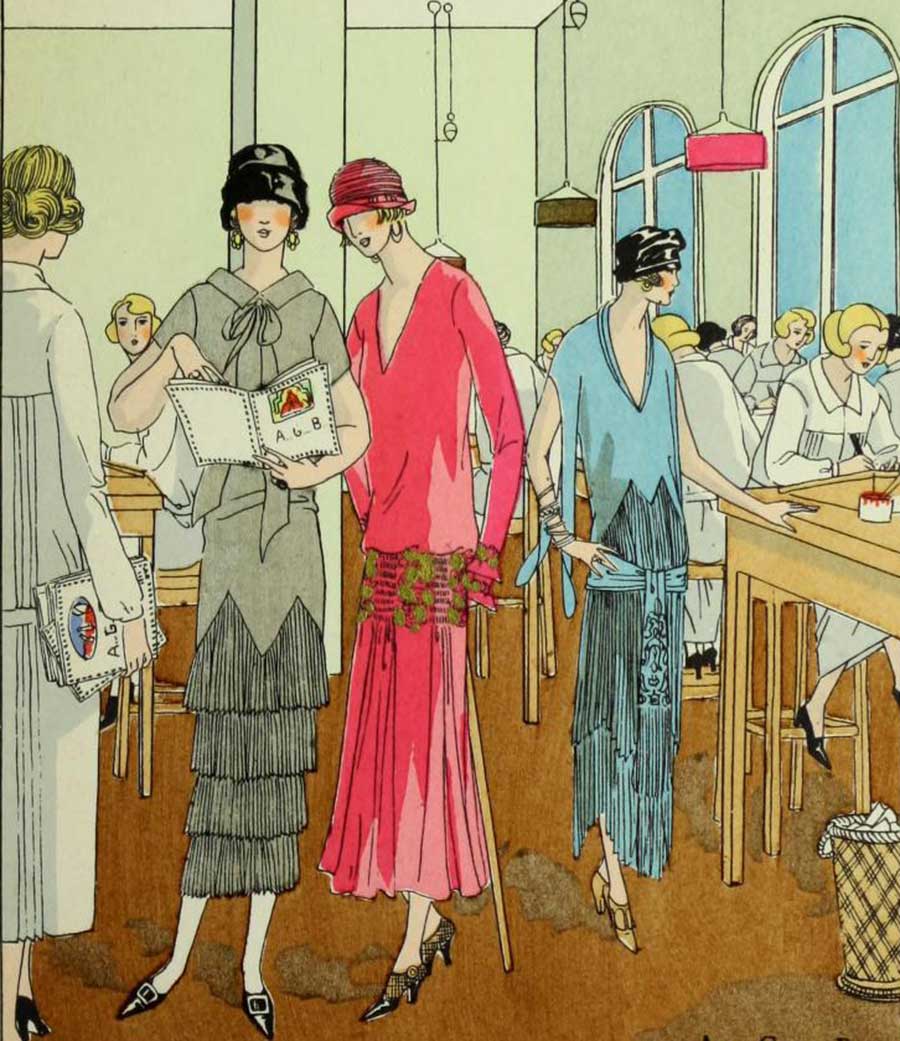
Don’t emphasize vertical lines either in construction or decoration. Always accent horizontal lines that carry the eye around the figure. Skirts may be cut with yokes, circular flounces, false hems. Skirts with over drapery and pockets are especially good to make the body appear more curvy. For the upper body, you can look rounder by using capes, ruffles and scarfs. Soft wide belts will make your waist appear rounder.
Designs for the tall, stout Figure
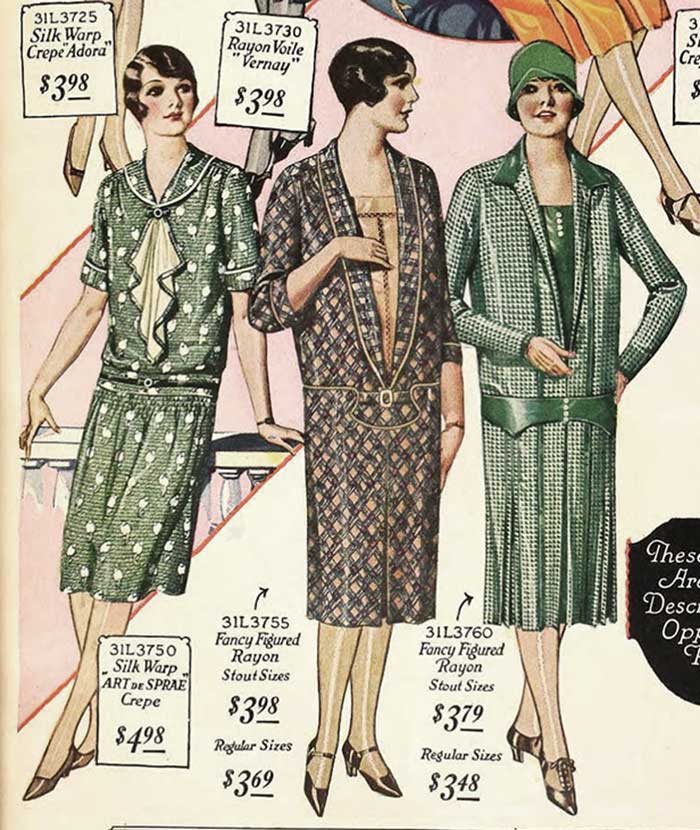
She should accept size as an asset and not attempt to conceal it by wearing coquettish clothes. The tall heavy woman must be especially careful of the length of her skirts. Short skirts are not becoming to her, a sort of ‘mutton dressed as lamb’ effect. The temptation to choose short skirts, no matter how fashionable they are, must be resisted. Skirts that are too long will make her seem old and heavy, and these too must be avoided. The tall stout woman may use both horizontal and vertical construction and trimming but should avoid fluffy or dainty dresses. To her belong rich and elegant materials, heavy silks and brocades, soft velvets etc.
Designs for the short thin Figure
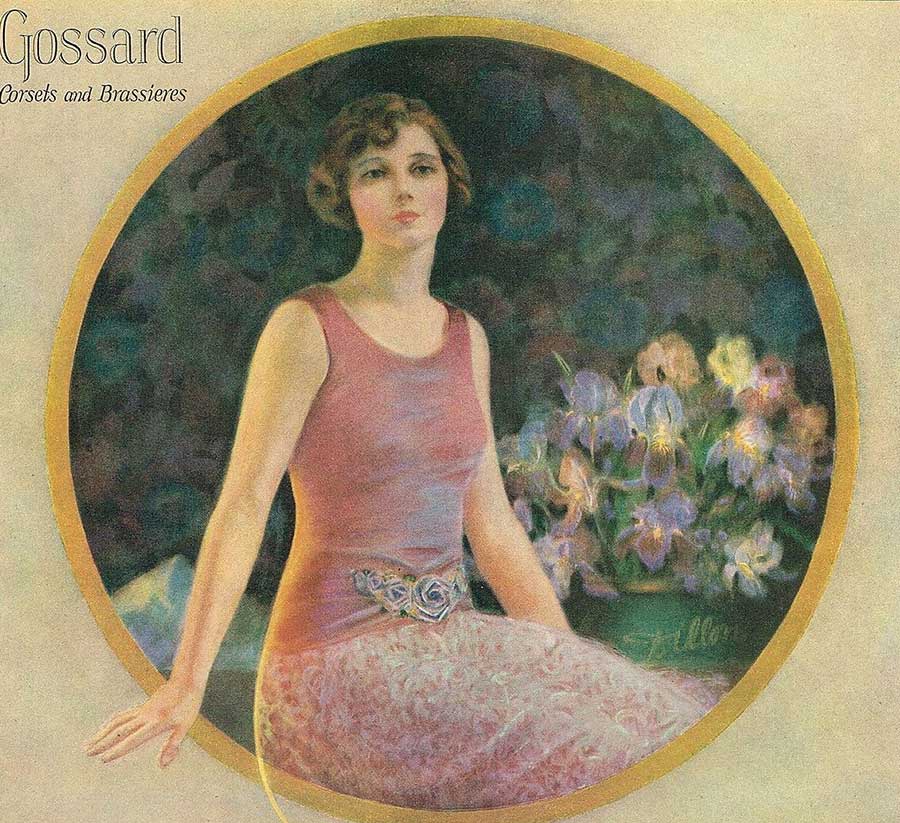
Daintiness should be the keynote of her 1920’s costume. For her especially are delicate and exotic colors, soft, fine fabrics, filmy laces. Quaintness are her province. She may wear extreme clothes impossible on a larger woman. She may use any type of line, both in construction and trimming, only take care that what she chooses is in proportion to her body.
Designs for the short stout Figure

You have the hardest task in planning your 1920’s clothing but do not despair. There are two general solutions which should be of value. You should always emphasize vertical lines; and you should concentrate attention on the head and face, so as to keep the body inconspicuous. Properly fitted gowns having long vertical structured parts, panels or drapery give the best proportion to the short heavy figure.
The skirts should be long and not flaring. Waists must be carefully cut and fitted but also be loose. Have them fitted while sitting. Avoid fancy sleeves. Long straight sleeves make the arms inconspicuous and do not call attention. Collars will produce a narrow line and add length. The neck opening should be long and narrow and call attention to your bust – you best asset. No fluffy ruffles for you, no puffs or ruches.
Designs for the Full Bust and the Flat Bust

For a woman with a large bust, great care should be given in the construction and fitting of the waist. It may be broken by a panel, or vest which gives an especially good effect if made of more interesting material than the rest of the garment. The neck line of the dress must be cut and fitted with great skill lest it bulge.
The woman with a flat bust does not have the problems of her well endowed sister. Fullness across the front of the waist, ruffles and jabots can improve her appearance quite easily.
Read the Top 1920’s Fashion trends for women.
That’s all ! ©Glamourdaze
About Glamourdaze
Glamourdaze is a vintage fashion and beauty expert with years of experience bringing historical style to life. Our deep-seated expertise is the foundation for all the content on this site, including our detailed history of women’s 1920s fashion. We also bring 1920s women’s fashion to life with our unique film restoration artistry, which you can see on the Glamourdaze YouTube channel.
